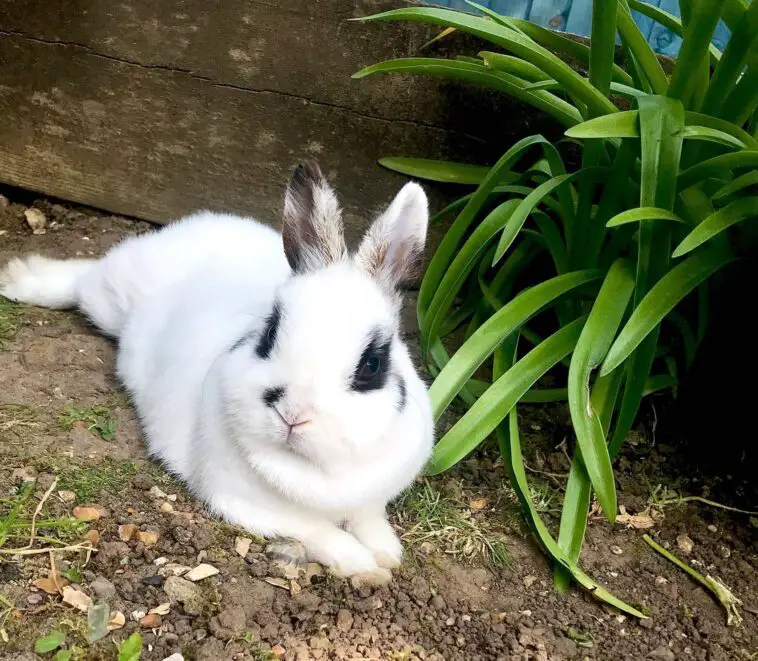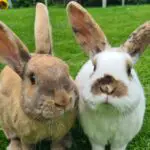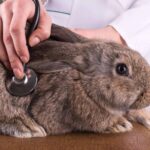The rabbit’s digestive system is unique from other pets. Since they are classified as herbivore animals, most of their diet consists of grass and hays.
Their body is made to absorb the nutrients such as fibers and then distribute them all over their body.
The system starts with the mouth, where the food is ingested. The stomach is responsible for breaking down the food for your rabbit to turn into small pieces and directing it to the intestines. Finally, the excess waste produced by the body is excreted in the rectum and anus.
Knowing your rabbit’s digestive system is necessary because it will help you understand your rabbit more.
Digestive System
The primary function of the digestive system is to ingest food and assimilate nutrition all over the body since they are not active animals like other pets such as dogs. According to the National Library of Medicine, food containing a high amount of fiber helps them sustain the right amount of energy and improves their digestion.
In addition, it also gives extra nutrition to your pet, especially during their critical period of life, such as lactation, pregnancy, and early development stages.
Moreover, the digestive tract acts as a shield from potential toxins or germs that can harm your rabbit. The surrounding in the abdomen eliminates numerous enzymes (proteins that crack up large fragments in foods to fewer bits), bacteria, and acid.
Since your rabbit’s immune system is intimately connected to the digestive system, they work together to block diseases. The digestive tract performs a vital function in excess elimination from the body, as adequately.
Parts of the Digestive System
Mouth
When your rabbit eats food, pieces are first contacted to the mouth. In this stage of digestion, the rabbit is munching the food into small pieces so that the food can be transported using its tongue. And then, they will continuously chew the pieces before it passes to the throat.
The tongue then moves the food to the back of the mouth, where it is swallowed into the stomach.
Some people believe rabbits have pouches in their cheeks and mouth to store food and eat later, as hamsters do. But rabbits are different; they directly fodder in their food and absorb all its nutrients.
Esophagus
After your rabbit finishes chewing their food, the mouth will transport it to its esophagus.
The esophagus has a resemblance and is quite like a long tunnel that allows your rabbit to eat pieces of food from the mouth up to the intestines.
Moreover, this part of the digestive system works like a machine that moves within the throat continuously as your rabbit chews and swallows their food. The position of the esophagus parallels the trachea that reaches through the chest cavity, following the lungs and heart.
Stomach
The rabbit’s stomach is situated on the left side of its abdomen. They perform various functions for a good result of the digestion process of your pet. Such as food storage, mixing with gastric juices, and protecting the stomach from physical damage.
The primary task of the stomach is one of the important processes in the digestive system, which is absorbing and breaking down pieces of food to get nutrients. This is possible because of the presence of acid or also known as gastric juice.
Intestine
The rabbit’s intestine is extremely spiral and has a length of approximately 47 inches long. This allows the food to travel and process the nutrients from it.
Intestines are classified into two parts: the small intestine and the large intestine.
Small Intestine
The small intestine is the area where most absorption and digestion of nutrition happens. According to the study, it has a length of 3m long, where enzymes and buffers happen.
Large Intestine
The large intestine is connected to the small intestine. However, they have a different function to your rabbit’s body. The food’s extra nutrients or unwanted fats are mostly transported in this part of the digestive system. This is where the process of rabbit poop happens.
Rectum
After the food waste is processed in the large intestine, digestion continues in the rectum. This is where your rabbit stores the food waste formation and sends a signal to the brain to release it as poop.
Anus
The anus is the opening of the rectum wherein the rabbit stool is directly excited. They produce pellet-like-shaped poop. And sometimes, you might notice that your rabbit will be eating their poop.
This poop is known as cecotropes. This activity is part of your rabbit’s instinct to get an additional nutrient from the food they digested.
Digestive Problems
Digestive problems are common for most rabbits, especially if they don’t have a healthy lifestyle and balanced meals. Although for some illnesses, bacteria and viruses can lead to digestive problems. It’s best to watch your pet for any possible changes in its behavior.
Here are some of the common signs that your rabbit might be experiencing problems in its digestive system:
- Your rabbit will appear passive and don’t want to be disturbed. Rabbit may lie down in an awkward position.
- The rabbit will sometimes grind their teeth due to the stress and pain they are feeling. It happens when their tummies are full of gas. To know if your pets have gas in their tummies, gently touch their bellies.
- Your rabbit poop has a soft and gooey texture because there’s a disruption in their stomach from the food that they eat. This might also lead to diarrhea which can be harmful to your rabbit.
- Your rabbit continuously vomits because it will try to release toxins or unknown nutrients from its body.
Hairball in Rabbit’s Stomach
Hairball is the term for a collection of hair or your rabbit’s fur that forms inside its stomach. This irritates their digestion leading to vomiting and bloating.
Hairballs happen because rabbits clean themselves by licking their fur, and sometimes they accidentally swallow some strands.
When your pets have a hairball, the veterinarian may treat it by using a range of remedies to naturally remove the hair strands in the form of pooping. One of these is letting your rabbit eat foods rich in digestive enzymes to push the hairball out of its stomach.
Antibiotics are not suitable for hairball cases because they disrupt the correct balance between the bad and good bacteria in the gut.
When your veterinarian recognizes more bad bacteria than good ones, most likely, they will administer probiotics to increase the number of good bacteria.
In severe cases of hairball in animals, they need to go under surgery to avoid further blockage in your rabbit’s gut.
Treatment and Prevention
Scheduling Veterinarian Visit
The best way to treat or avoid any digestive problems for your pet is by asking for help from a medical expert. They will provide your rabbit recommendation on what kind of lifestyle and diet are good for them.
However, if you think your rabbit is already suffering from digestive problems, vet doctors usually cure their patient using general treatment. For example, rehydration, pain control, and restoring gut operation.
Treatment-related digestive problems are hard and should not be overlooked. You need to understand that veterinarians are the expert and that you should seek help in performing their treatment. You can only take charge when your pets are well enough for in-home care.
Providing a Rich-in-Nutrient Diet
One of the best practices to officially avoid digestive problems is foddering your bunny with the nutrients they need. It would be best to list what food your rabbit can safely eat and food that can harm them.
Ideally, the best diet for them is alfalfa and timothy hay. Although, you can offer them fruits and vegetables for additional nutrients. But remember that overeating in rabbits can also cause digestive problems for them.
Here are the best foods that your rabbit can safely eat.
- Rabbit Pellets
- Carrot
- Banana
- Broccoli
- Spinach
- Cilantro
- Apples (not the stalks and seeds because they contain a toxin called cyanide)
- Blueberry
- Strawberry
Read More For More Information about Food that Your rabbit Can and Cannot Eat:
The Definitive Guide To What Foods Rabbits Can & Cannot Eat.
Key Takeaways
- Rabbits are herbivore animals, so their digestive systems differ from most animals. They have sensitive digestion when it comes to food, so you should have a strict diet that will suit their body.
- Food containing fiber helps them sustain the right amount of energy and improves their digestion. Especially during pregnancy, lactation, and the development stage of their life, nutritious food is recommended for every rabbit.
- The parts of the digestive system of rabbits are the mouth, esophagus, stomach, intestine (small and large intestine), rectum, and anus.
- The stomach and intestine have a huge role in breaking down and separating the nutrients that your rabbit needs. The small intestine is the passageway of good nutrients throughout the body. At the same time, the large intestine will collect the unwanted waste that will exit as a stool in the rectum and anus.
- A common cause of digestive problems is poor nutrition and bacteria building up in the body.
- Some signs you should keep an eye on to know if your rabbit has bad digestion are continuous vomiting, lethargy, grinding teeth, bad posture, and diarrhea.
- Hairball is the collection of hair that forms inside your rabbit’s stomach. It causes them pain, and surgery is needed to remove the strands of hair in severe cases.
Related Content
Rabbit Diet
- The Definitive Guide To What Foods Rabbits Can & Cannot Eat
- 6 Rabbit Pellets You Can Trust
- Do Rabbits Love Sweet Foods? (Natural Treats & Feeding Guide)
- Best Treats To Reward Your Rabbits (Feeding Guide & Tips)
- What Food Do Baby Bunnies Eat? (Ideal Diet & Care Guide)
- How Long Can Rabbits Survive Without Food? (Survival Rate, Facts & Care Guide)
- What To Do When Your Rabbit Accidentally Eats Marijuana? (The Law, Signs, Treatment & Alternatives)
Rabbit Health
- Definitive Guide to Your Rabbit’s Health
- Diarrhea In Rabbits: Causes, Treatment & Prevention
- Understanding the Drinking Habit of a Rabbit
- Rabbit’s Digestive System: Parts, Problems, Treatment & Prevention
- Lumps In Rabbits (Causes, Types, & Treatment)
- Understanding Your Rabbit’s Eyes: Common Infections (And Treatment)
- Ear Mites in Rabbits: Diagnosing, Risks, Prevention & Treatment
- Parasitic Infestation: Encephalitozoon Cuniculi in Rabbits (What It Is, Symptoms & Treatment)
- Rabbit Testicles: Common Problems, Symptoms & Best Practices


